This xBmt was completed by a member of The Brü Club in collaboration with Brülosophy as a part of The Brü Club xBmt Series. While members who choose to participate in this series generally take inspiration from Brülosophy, the bulk of design, writing, and editing is handled by members unless otherwise specified. Articles featured on Brulosophy.com are selected by The Brü Club leadership prior to being submitted for publication. Visit The Brü Club Facebook Group for more information on this series.
Author: Matt Skillstad
It’s commonly accepted that hops added early in the boil contribute primarily bitterness to beer while later kettle additions result in less bitterness but more flavor and aroma. As such, when brewing styles like NEIPA that seek to maximize hop flavor and aroma while minimizing bitterness, brewers often add most if not all of their kettle hops toward the end of the boil, or even once the boil is complete.
Counter to this approach, I brewed a Bells Two Hearted clone recipe last year that had only 2 relatively small kettle additions at 45 and 30 minutes left in the boil with everything reserved for the dry hop. Even though the recipe included no later kettle additions, the beer had plenty of hop flavor & aroma, which I believe came primarily from the sizable dry hop addition.
My experience with the Two Hearted clone got me questioning exactly what the flavor and aroma contributions of late kettle additions hops might be in a heavily dry hopped beers such as NEIPA. Do they really make a discernible impact in the finished beer, or does it amount to “whispering at a rock concert,” as Malcom would say?
| PURPOSE |
To evaluate the differences between a NEIPA with kettle hop additions made at the beginning of the boil and one where the kettle additions were made at flameout when expected IBU is the same.
| METHODS |
I went with a fairly standard NEIPA recipe for this xBmt, doing my best to adjust hop amount in each to achieve the same expected IBU. To determine the IBU contribution for the batch receiving only a flameout addition, I referred to another experiment showing that when a beer had hops added only at flameout and was chilled quickly, the measured IBU was about 60% of a similar beer with the same amount of hops added with 10 minutes left in the boil.
Early Addition Recipe
Recipe Details
| Batch Size | Boil Time | IBU | SRM | Est. OG | Est. FG | ABV |
|---|---|---|---|---|---|---|
| 6 gal | 45 min | 44.6 IBUs | 6.5 SRM | 1.065 | 1.021 | 5.8 % |
| Actuals | 1.065 | 1.016 | 6.5 % | |||
Fermentables
| Name | Amount | % |
|---|---|---|
| Pale Ale Malt (Rahr) | 10 lbs | 68.38 |
| White Wheat Malt | 2 lbs | 13.68 |
| Munich I (Weyermann) | 1.5 lbs | 10.26 |
| Oats, Flaked | 1.125 lbs | 7.69 |
Hops
| Name | Amount | Time | Use | Form | Alpha % |
|---|---|---|---|---|---|
| CTZ | 37 g | 45 min | Boil | Pellet | 12.3 |
| Citra | 28 g | 9 days | Dry Hop | Pellet | 13.1 |
| Comet | 28 g | 9 days | Dry Hop | Pellet | 7.1 |
| Mosaic | 28 g | 9 days | Dry Hop | Pellet | 11.3 |
| Citra | 28 g | 4 days | Dry Hop | Pellet | 13.1 |
| Mosaic | 28 g | 4 days | Dry Hop | Pellet | 11.3 |
| Simcoe | 28 g | 4 days | Dry Hop | Pellet | 13.5 |
Yeast
| Name | Lab | Attenuation | Temperature |
|---|---|---|---|
| London Fog (066) | White Labs | 73% | 64°F - 74°F |
Notes
| Water Profile: Ca 125 | Mg 10 | Na 35 | SO4 75 | Cl 105 |
Download
| Download this recipe's BeerXML file |
Late Addition Recipe
Recipe Details
| Batch Size | Boil Time | IBU | SRM | Est. OG | Est. FG | ABV |
|---|---|---|---|---|---|---|
| 6 gal | 45 min | 47.4 IBUs | 5.1 SRM | 1.065 | 1.021 | 5.8 % |
| Actuals | 1.065 | 1.016 | 6.5 % | |||
Fermentables
| Name | Amount | % |
|---|---|---|
| Pale Malt (2 Row), Rahr | 10 lbs | 68.38 |
| White Wheat Malt | 2 lbs | 13.68 |
| Munich I (Weyermann) | 1.5 lbs | 10.26 |
| Oats, Flaked | 1.125 lbs | 7.69 |
Hops
| Name | Amount | Time | Use | Form | Alpha % |
|---|---|---|---|---|---|
| CTZ | 68 g | 0 min | Boil | Pellet | 12.3 |
| Centennial | 57 g | 0 min | Boil | Pellet | 10.9 |
| Simcoe | 57 g | 0 min | Boil | Pellet | 12.8 |
| Citra | 28 g | 9 days | Dry Hop | Pellet | 13.1 |
| Comet | 28 g | 9 days | Dry Hop | Pellet | 7.3 |
| Mosaic | 28 g | 9 days | Dry Hop | Pellet | 11.3 |
| Citra | 28 g | 4 days | Dry Hop | Pellet | 13.1 |
| Mosaic | 28 g | 4 days | Dry Hop | Pellet | 11.3 |
| Simcoe | 28 g | 4 days | Dry Hop | Pellet | 13.5 |
Yeast
| Name | Lab | Attenuation | Temperature |
|---|---|---|---|
| London Fog (066) | White Labs | 73% | 64°F - 74°F |
Notes
| Water Profile: Ca 125 | Mg 10 | Na 35 | SO4 75 | Cl 105 |
Download
| Download this recipe's BeerXML file |
Editor’s Note: Given the late addition batch used 3 hop varieties at flameout while the early addition batch used only 1 variety at 45 minutes, this xBmt tested multiple variables.
The day before brewing, I measured out two identical sets of grain then milled them directly into Brew Bags.
I then filled the kettle with the entire volume of water for both batches and adjusted it to my desired profile before dropping in my electric immersion heater, which was set to come on a few hours before I planned to brew the next day.
The next morning, I equally split the heated strike water between two kettles before dropping in the bags full of grain and giving both a good stir. With the grains fully incorporated, I checked to see that each mash was at my target mash temperature.
During the mash rest, I weighed out the kettle hop additions.
At the end of each 45 minute mash rest, I hoisted the grain bags out of the kettles and allowed them to drain as I began heating the sweet wort.
Both worts were boiled for 45 minutes with one receiving all kettle hop additions at the start of the boil while all hops were added to the other at flameout. Both batches were designed to have the same approximate IBU, which based on my calculations, resulted in the early and late addition batches receiving 37 g/1.3 oz and 182 g/6.4 oz total hops, respectively. Each wort was chilled once the boil was complete.
Refractometer readings showed both worts achieved the same OG.
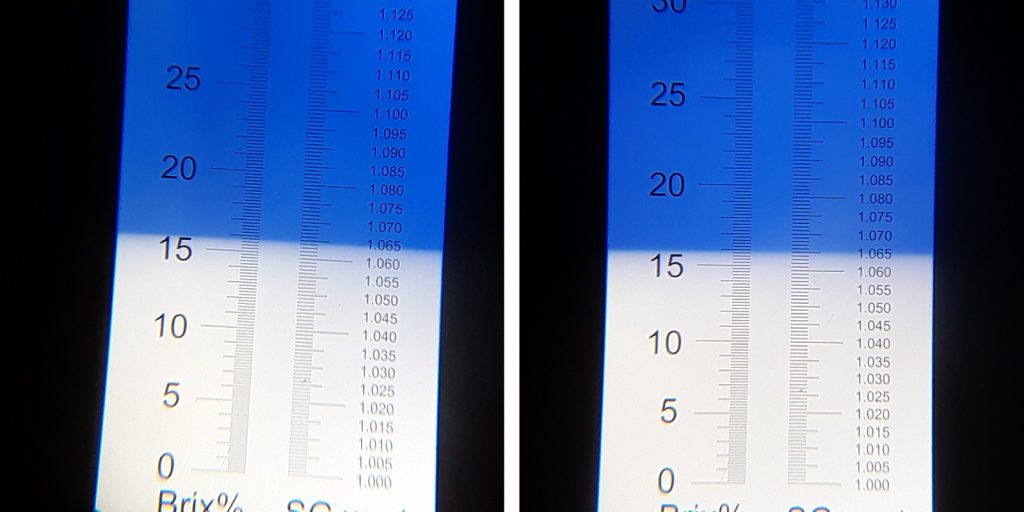
Each wort was racked to a sanitized stainless fermenter.
The filled fermenters were placed next to each other in my chamber controlled to 66°F/19°C then pitched with equal amounts of WLP066 London Fog slurry I received from a pro brewer friend, after which I hit each was hit with 60 seconds of pure oxygen. Once signs of active fermentation were visible, I connected the fermenters to sanitizer filled kegs in order to purge them with naturally produced CO2.
I added an initial dose of dry hops 3 days into fermentation then returned 3 days later to add the second dry hop charge. After another 2 days, I attached CO2 filled BrüLoonLocks to each fermenter then reduced the temperature for cold crashing.
Hydrometer readings at this point showed the beers settled at the same FG.
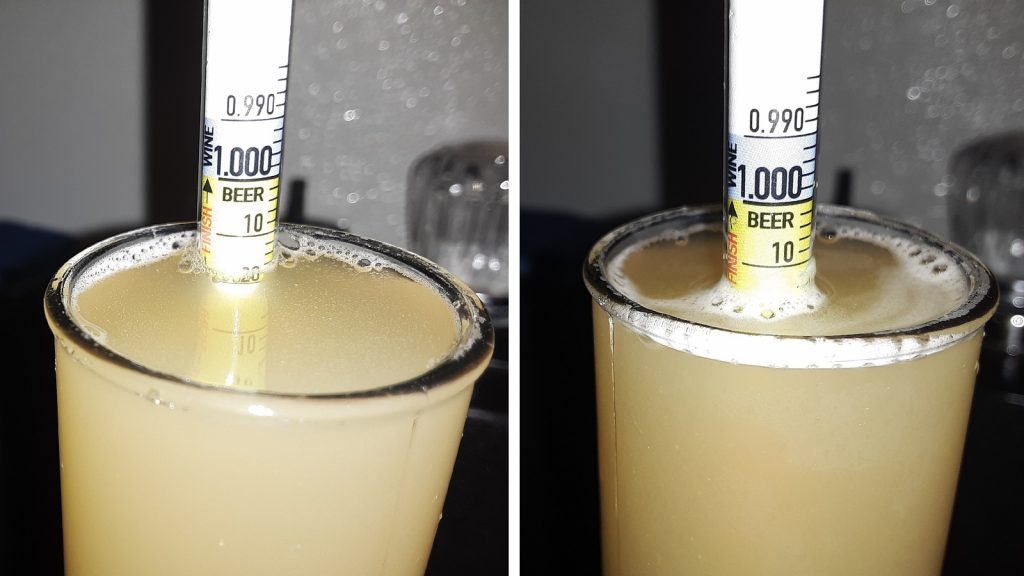
After 48 hours, the beers were racked to the kegs that had previously been purged with CO2 produced during fermentation.
The filled kegs were chilled and bust carbonated at 30 psi for 24 hours before being reduced to serving pressure. After a couple weeks of conditioning, they were both deliciously opaque, carbonated, and ready to serve to tasters.
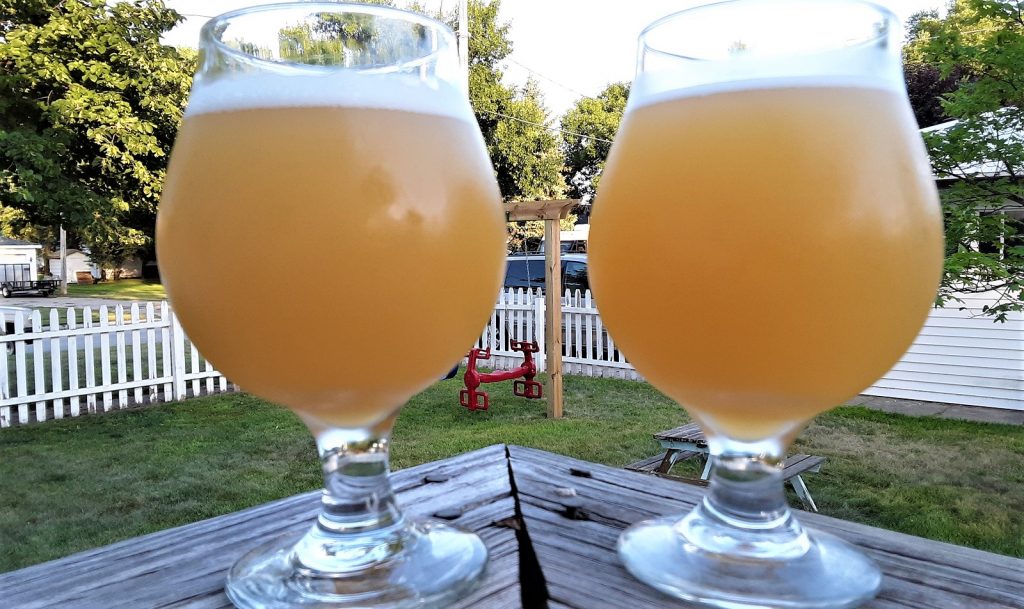
| RESULTS |
A total of 17 people of varying levels of experience participated in this xBmt. Each participant was served 2 samples of the early kettle addition beer and 1 sample of the beer late kettle addition beer in different colored opaque cups then asked to identify the unique sample. A total of 10 tasters (p<0.05) would have had to accurately identify the unique sample in order to reach statistical significance, though only 6 did (p=0.522), indicating participants in this xBmt were unable to reliably distinguish NEIPAs of the same expected IBU whose kettle hop additions were made at either the beginning of the boil or flameout.
My Impressions: I attempted 4 triangle tests and chose the odd-beer-out just twice. These beers were a lot more similar than I expected them to be, which I believe is likely due to the dry hop. When focusing really hard, I felt the early kettle hop beer tasted a bit hollow while the flameout addition batch had a more saturated hop character, though again, the difference wasn’t great. I ended up mixing the beers at a 60/40 ratio of late to early, which my wife and I called the “on time” blend, and all 3 versions were popular among guests.
| DISCUSSION |
Hops are added to the boil kettle at different times to impart varying degrees of bitterness, flavor, and aroma to the finished beer. After my experience brewing a Two Hearted clone that included no late boil hops yet still had the expected levels of hop character, I began to question whether the subtle differences in kettle hop character would be noticeable in a highly dry hopped beer. The fact tasters in this xBmt were unable to distinguish a NEIPA where the kettle hops were added early from one where the kettle hops were added at flameout when IBU was controlled suggests that this may indeed be the case.
It’s possible the difference would have been more pronounced if the batch that received the flameout addition was allowed to rest for a bit before chilling, or if the wort temperature was reduced prior to the hops being added. However, based on the results of several previous xBmts, I’m skeptical this would be the case. In another previous xBmt comparing the impact of a hop stand to dry hoping, tasters were able to tell the beers apart, which in my mind demonstrates the flavor impact of dry hopping, particularly considering tasters felt the dry hopped beer had more hop flavor than the hop stand version. I’ve no doubt that the dry hop additions in my xBmt contributed a ton of hop flavor and aroma, which may have overpowered any impact of the kettle hop additions.
Hops are expensive and soak up a lot of beer, making the use of early kettle hop additions enticing for highly hopped NEIPA. That said, I won’t totally be changing my brewing practices on hoppy beers, in large part because my casual beer enjoying and non-brewer wife had a preference for the late addition batch… even when I told her it cost $8 more to brew– when your wife gives you tacit permission to buy more hops, you buy more hops! Ultimately, this experience left me feeling like my common approach of adding a small bittering hop addition with a large but reasonable late addition isn’t necessarily a bad one.
Special thanks to Adam Hervert from the Elkhorn Valley Society of Brewers for letting me borrow his kettle and burner so I could do a side-by-side brew, as well as to Patrick McCabe and the Lincoln Lagers for hosting my tasting session.
 Matt Skillstad is a happy husband to a wonderful wife (who likes his beer!) and proud father of 5 children under 7 years old from Pierce, Nebraska. He has been brewing since 2011 and, in addition to The Brü Club, is a member of the Elkhorn Valley Society of Brewers. He enjoys experimenting with his brewing in an effort to make better beer in less time with less effort. When not brewing or hanging with his family, Matt enjoys bike riding and golfing (poorly).
Matt Skillstad is a happy husband to a wonderful wife (who likes his beer!) and proud father of 5 children under 7 years old from Pierce, Nebraska. He has been brewing since 2011 and, in addition to The Brü Club, is a member of the Elkhorn Valley Society of Brewers. He enjoys experimenting with his brewing in an effort to make better beer in less time with less effort. When not brewing or hanging with his family, Matt enjoys bike riding and golfing (poorly).
If you have any thoughts about this xBmt, please do not hesitate to share in the comments section below!
Support Brülosophy In Style!
All designs are available in various colors and sizes on Amazon!
Follow Brülosophy on:
FACEBOOK | TWITTER | INSTAGRAM
If you enjoy this stuff and feel compelled to support Brulosophy.com, please check out the Support page for details on how you can very easily do so. Thanks!

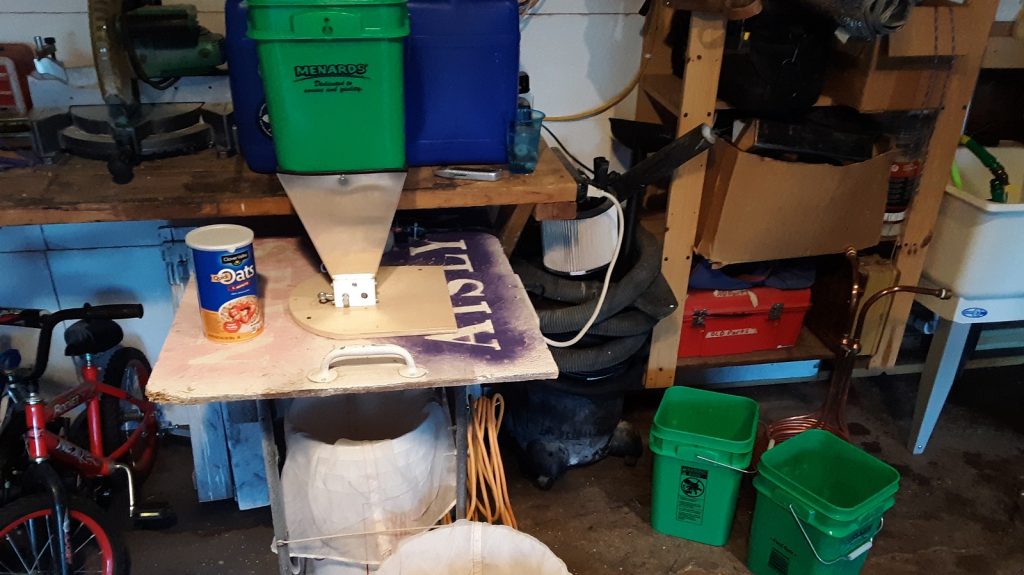
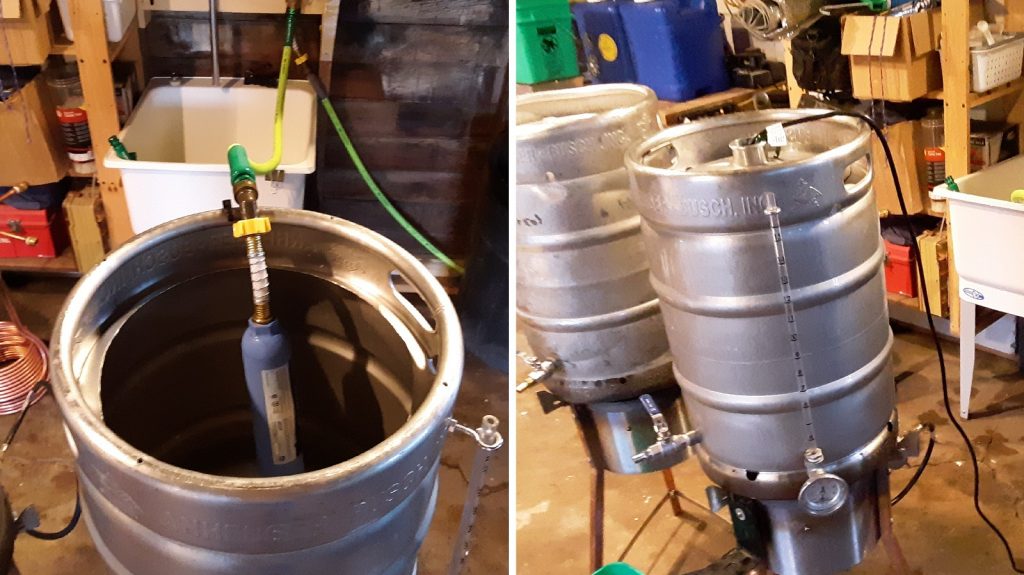
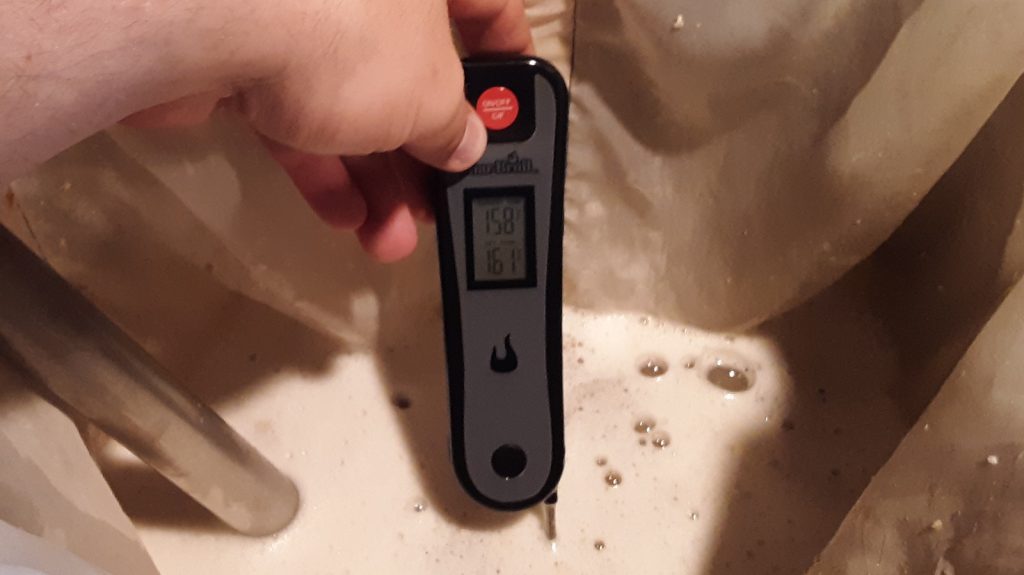
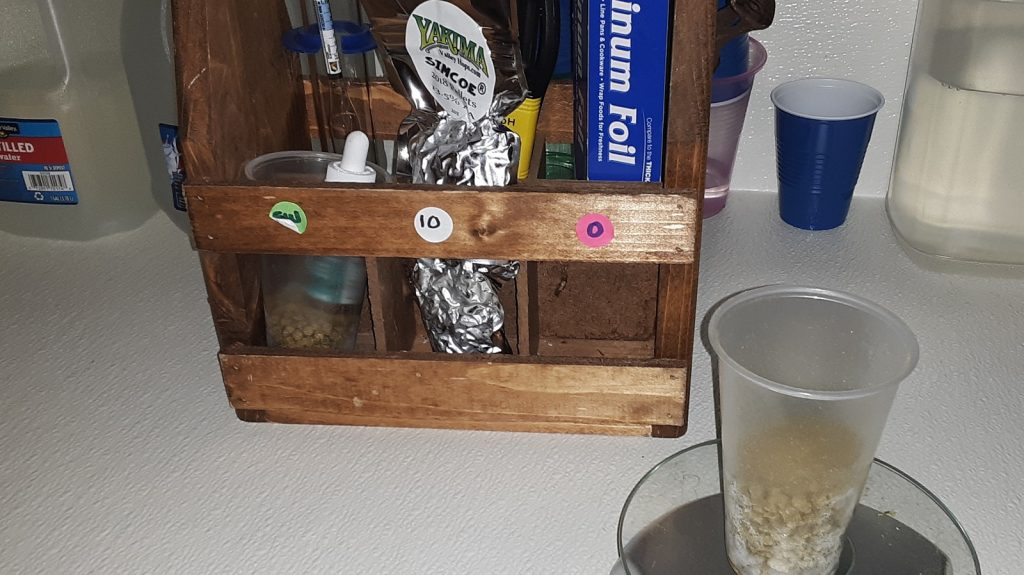
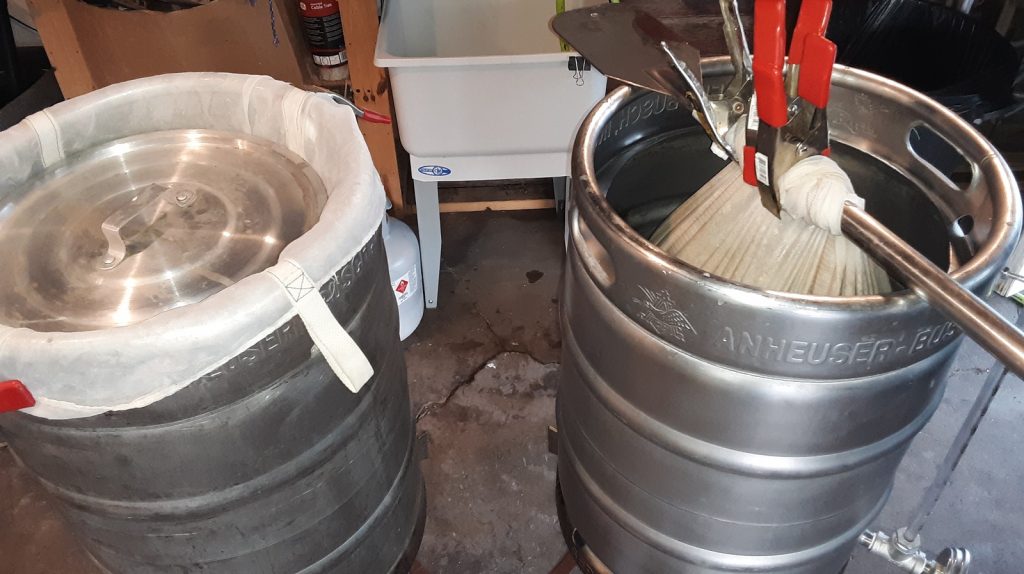
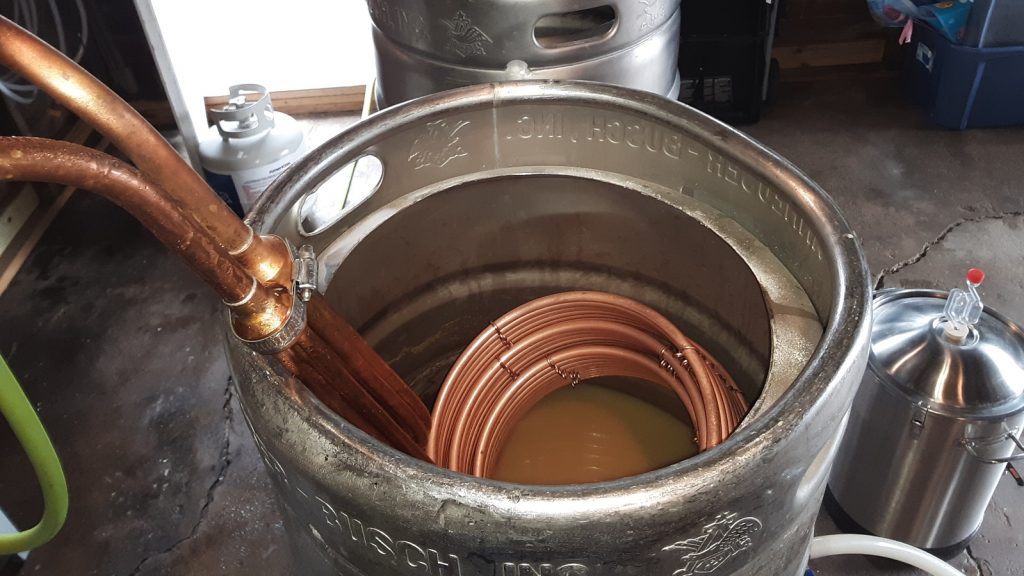
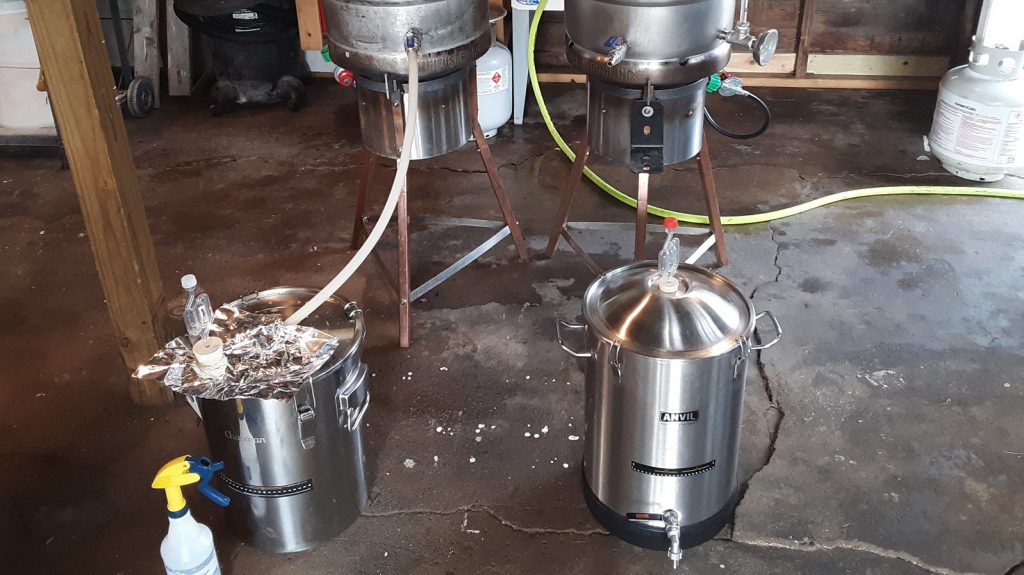
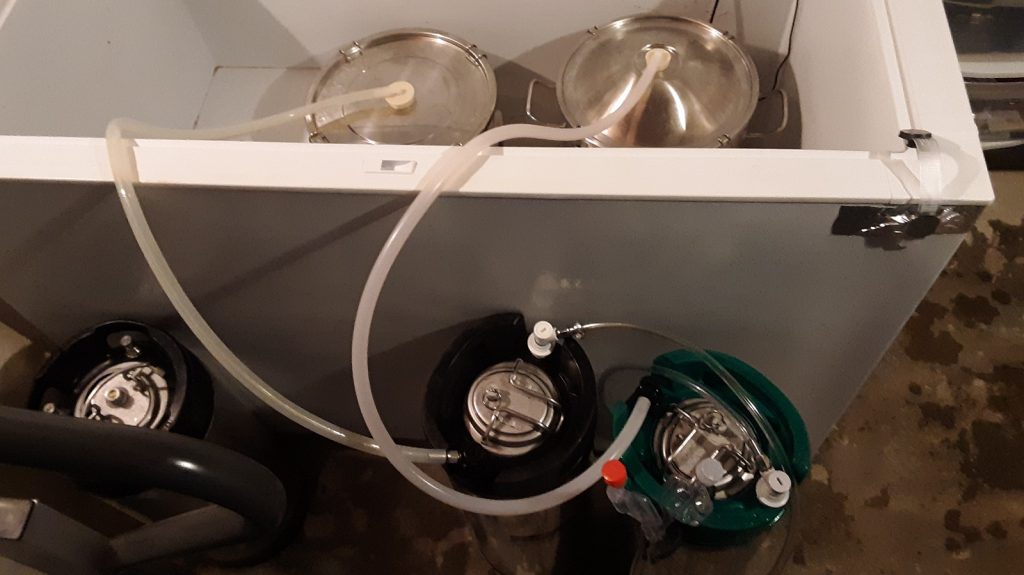
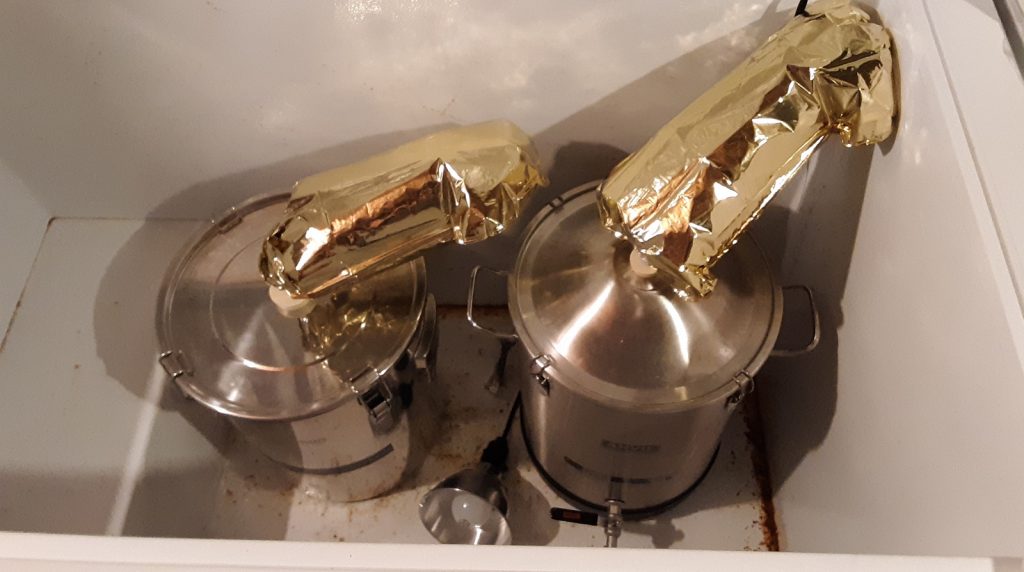
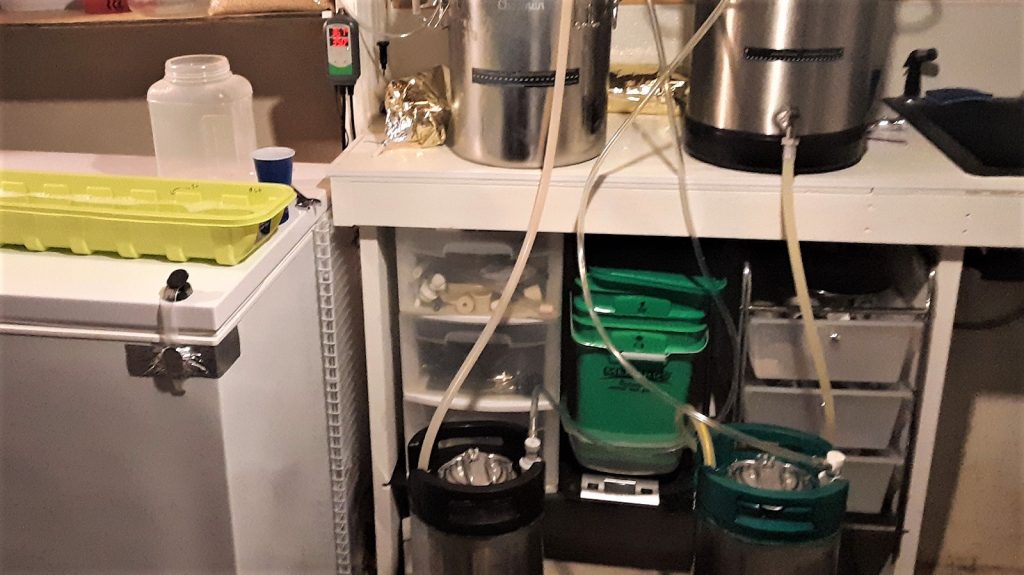









14 thoughts on “The Brü Club xBmt Series | Early vs. Late Kettle Hop Additions In A Hazy IPA”
Where are the kettle additions?
The late addition batch recieved these hops at flameout before being quickly chilled:
-2.4oz(68) CTZ 12.3%alpha
-2oz(28g) Simcoe 13.5%alpha
-2oz (28g) Centennial 11.1%alpha
Ah, I missed that! Thanks!
That’s because he didn’t list the Centennial until his comment.
Isn’t 28g only 1oz?
My bad. Should be 57g each simcoe & Centennial. The recipie reflects this.
I’m confused. I do not understand the hopping schedule differences in the two batches? Did both receive a dry hops charge?
From what I can gather:
[The 1st recipe]
NAME AMOUNT TIME USE FORM ALPHA %
CTZ 37 g 40 min Boil Pellet 12.1
Citra 28 g 9 days Dry Hop Pellet 13.1
Comet 28 g 9 days Dry Hop Pellet 7.1
Mosaic 28 g 9 days Dry Hop Pellet 11.3
Citra 28 g 4 days Dry Hop Pellet 13.1
Mosaic 28 g 4 days Dry Hop Pellet 11.3
Simcoe 28 g 4 days Dry Hop Pellet 13.5
[The second recipe is-all at flameout]
-2.4oz(68) CTZ 12.3%alpha
-2oz(28g) Simcoe 13.5%alpha
-2oz (28g) Centennial 11.1%alpha
Is that correct? Where is the Centennial in the 1st, and where is the Citra, Comet, Mosaic in the 2nd?
Taking a look at this issue right now, will fix shortly. Sorry about the confusion.
Why isn’t the Centennial hops listed at all in the 45min addition version of the recipe?
You guys (or I myself) could run an experiment of Raw vs. Boil NEIPA from the same recipe.
I can’t imagine adding that much late addition hops and then cooling so quickly. Seems like that wouldn’t leave enough time to extract enough flavor and aroma to be that noticeable against a heavy dry hop schedule. What I have noticed though in various batches is the hop character in whirlpool hops at flame out temps vs. lowering temps down below isomerization temp…for me that temp was 140. I am just relying on my notes though from batch to batch as I have never done a side by side. Would love to see an exBEERiment comparing the two. Bias could be playing a roll in my perceptions.
There have been a couple xbmts that I’m aware of looking at this.
https://brulosophy.com/2017/07/31/the-hop-stand-flameout-vs-120f-49c-exbeeriment-results/
https://brulosophy.com/2016/02/01/the-hop-stand-hot-vs-chilled-wort-exbeeriment-results/
Yeah I saw those, but a session IPA and a pale lager with just a tiny hopstand I’m not sure would really tell you anything definitive. I’m talking something like a NEIPA where you have a significantly large hopstand with several oz. of hops. I think if I convert from fly sparge to batch I can convert my HLT into another mash tun and do an exBEERiment like this myself :)…I’m tempted.
That’s because there isn’t any 🙂 the recipe for each batch is above. They are correct as shown now.